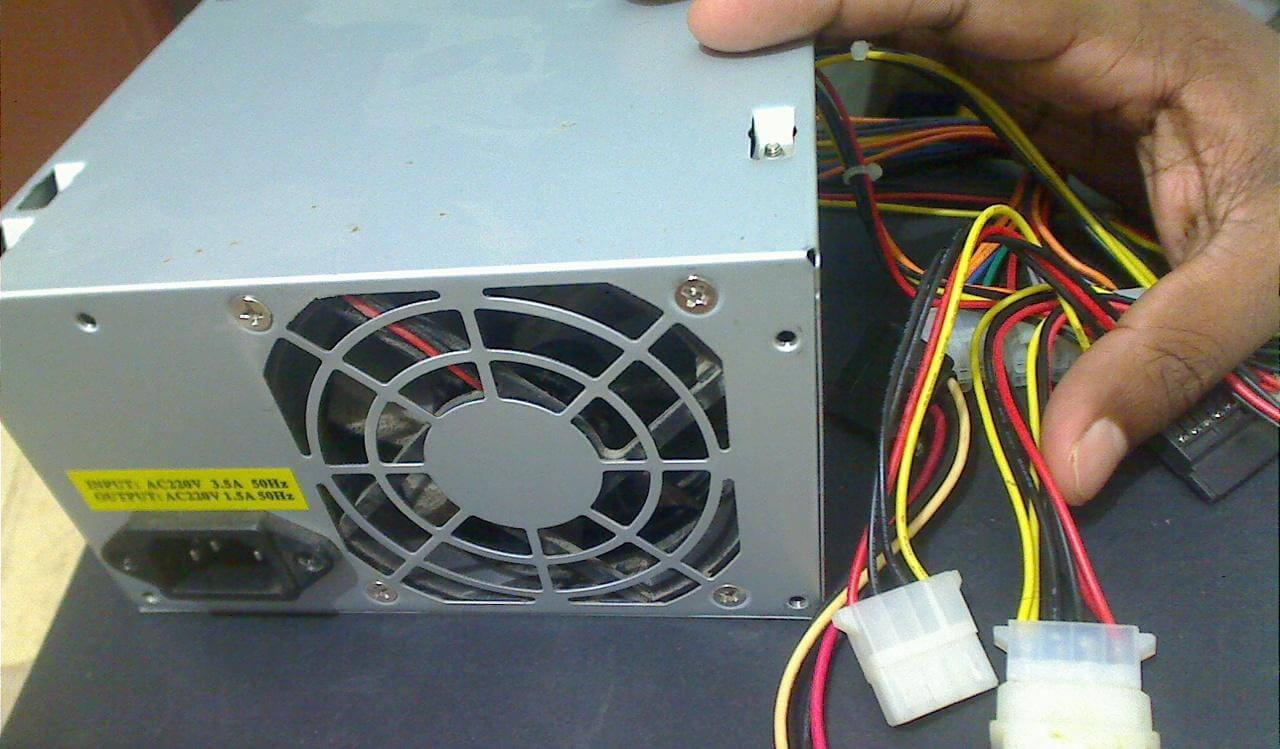A computer is a combination of several electronic devices (Hard Disk, Optical Drive, CPU etc) each of which, have their specific operating voltages and currents. For all of them to work together, they are to be fed with constant desired voltages without much deviation.
Any Power Supply Unit (PSU) is expected to deliver a regulated output voltage to the load, using the poorly regulated input voltage available at the wall outlet. In case of electronic circuits, this regulated voltage needs to be a stabilized low-voltage DC. This can be achieved by any of the two types of PSUs: Linear PSU or Switch-mode PSU (SMPS).
Switch-Mode Power Supply (SMPS):
In computers, we work with the Switch-Mode Power Supply Units (SMPS). The particular reason, SMPS are only used is that they are far more efficient than the rest. SMPS Unit has lesser electronic components comparatively and they perform the chopping process (switching between voltage levels) at high frequencies.
Hence there is low power dissipation due to which we get higher efficiency (up to 80%). The other advantage is that an SMPS Unit is very light-weight and economical compared to the rest and is available in different form factors.
The Internal Circuitry:
The internal circuitry of the SMPS has components which work at high frequencies mounted on a PCB. Each of them is designed to meet the specified output voltage levels. These include the rectifier section (steps down the input AC voltage), the filter section (completely removes all the AC voltage components) and then the MOSFET. The MOSFET forms the most important part of the SMPS Unit.
A MOSFET is controlled by an Integrated Circuit which decides the duty cycle (the ON time compared to total ON and OFF time) of the MOSFET. Hence different output voltages are produced and can be effectively distributed among various components.
Output Voltages:
Now that you have understood how a switch mode power supply unit is capable of producing many levels of output voltages, let’s take a look at the most common among them:
+5 Volts: In any standard computer, the +5 volts DC output wires are red in color. This voltage is used to drive motors present in drives of form factors 2.5 inch and 3.5 inches. This is a very basic supply voltage to many electronic circuits.
Also a 5 Volts green wiring is used to connect the power button to the rest of the circuitry.
+12 Volts: A +12 Volts DC supply is carried out by the yellow wires that come with your SMPS unit. Such high supply is generally used by the cooling systems and cooling fans of the computer. Also, this supply may be used to drive motors which can’t run on a +5V DC Supply.
-12 Volts: This Supply voltage collected from the blue wires was once used in the ISA bus slots (pin B7). Now mostly the work which was carried out earlier by a -12 volts supply, is being taken care of by the +/- 5 Volt supply.
+ 3.3 Volts: The +3.3 Volts orange line is the most basic supply line. This is so because; most of the CPUs and RAM use 3.3 volts. The PCI Bus is powered with this supply voltage and hence any components attached to it use this voltage line. In addition, a 3.3 Volts line powers up the motherboard and is used to compensate any line losses since every device needs a constant supply voltage.

